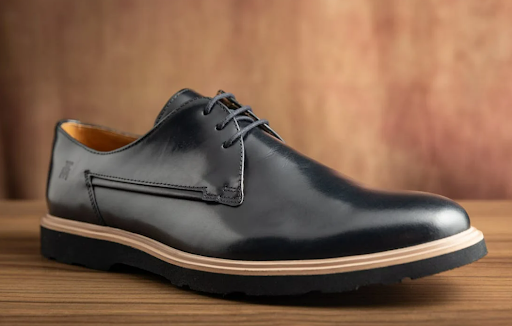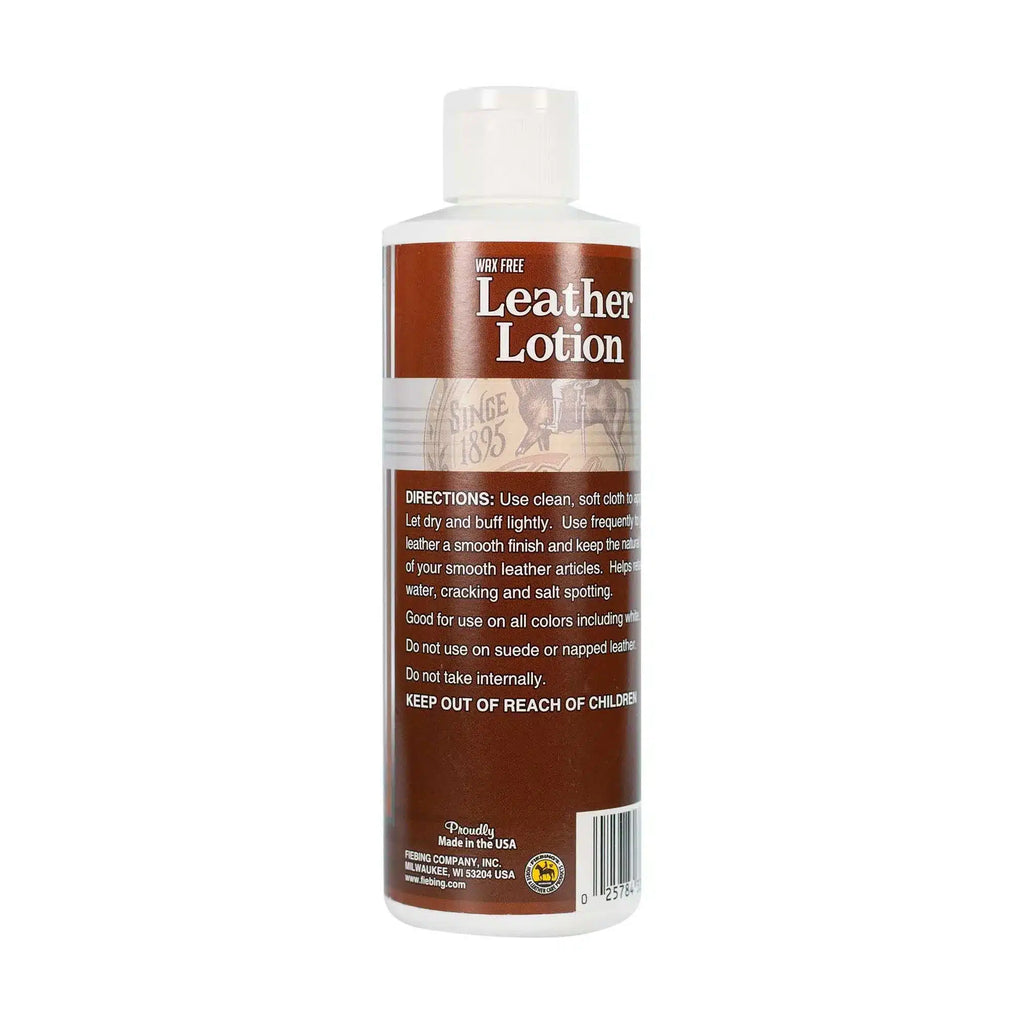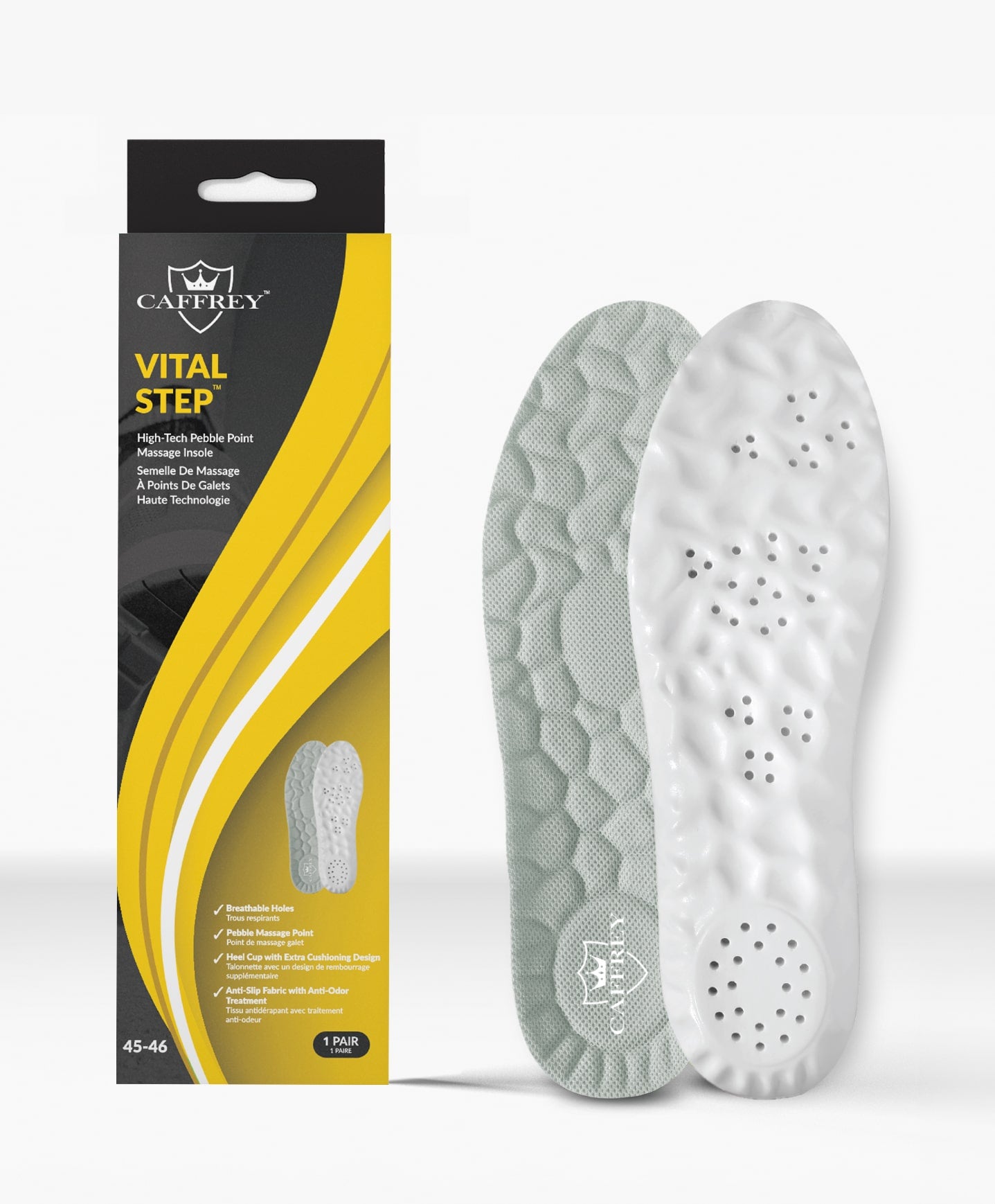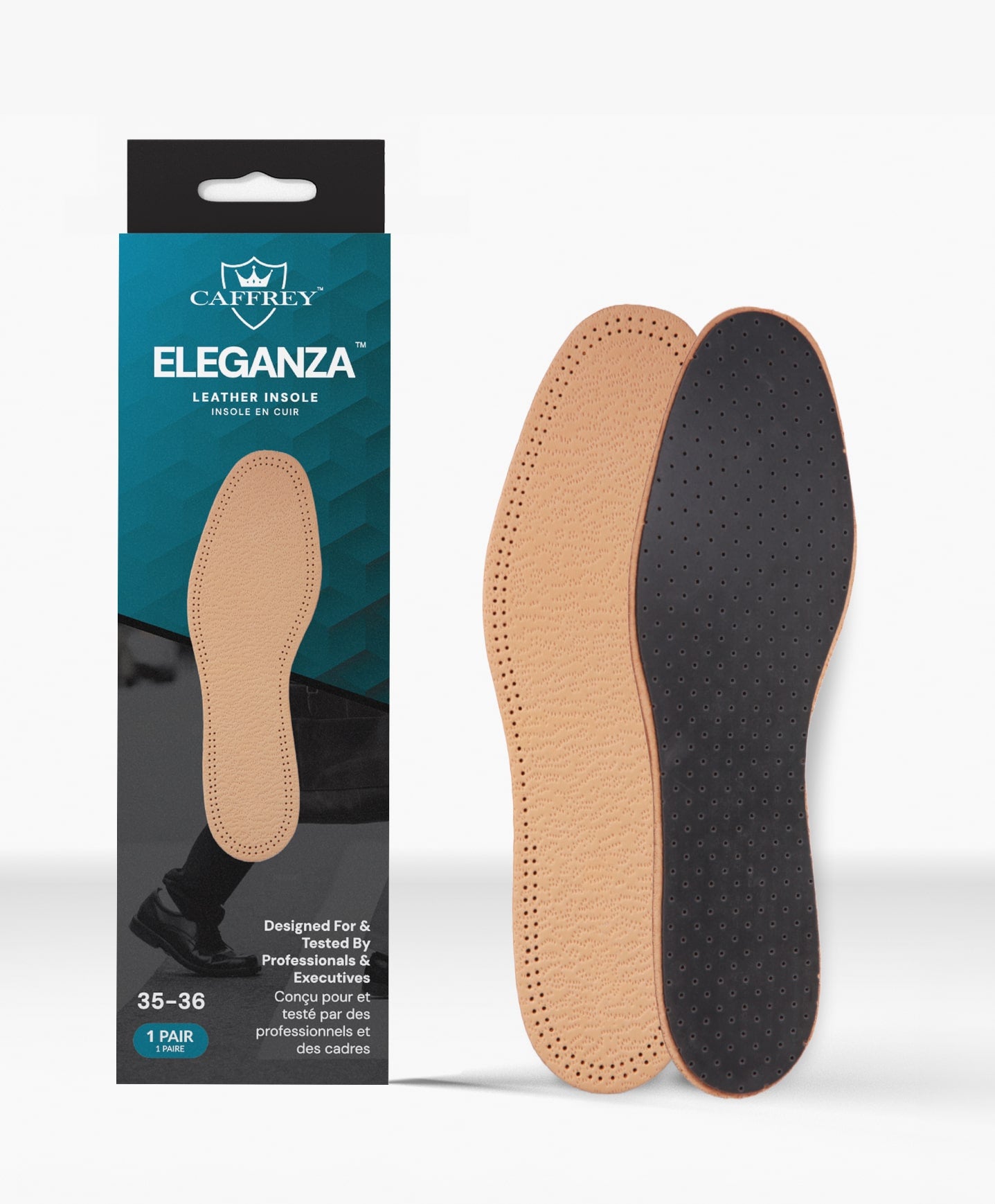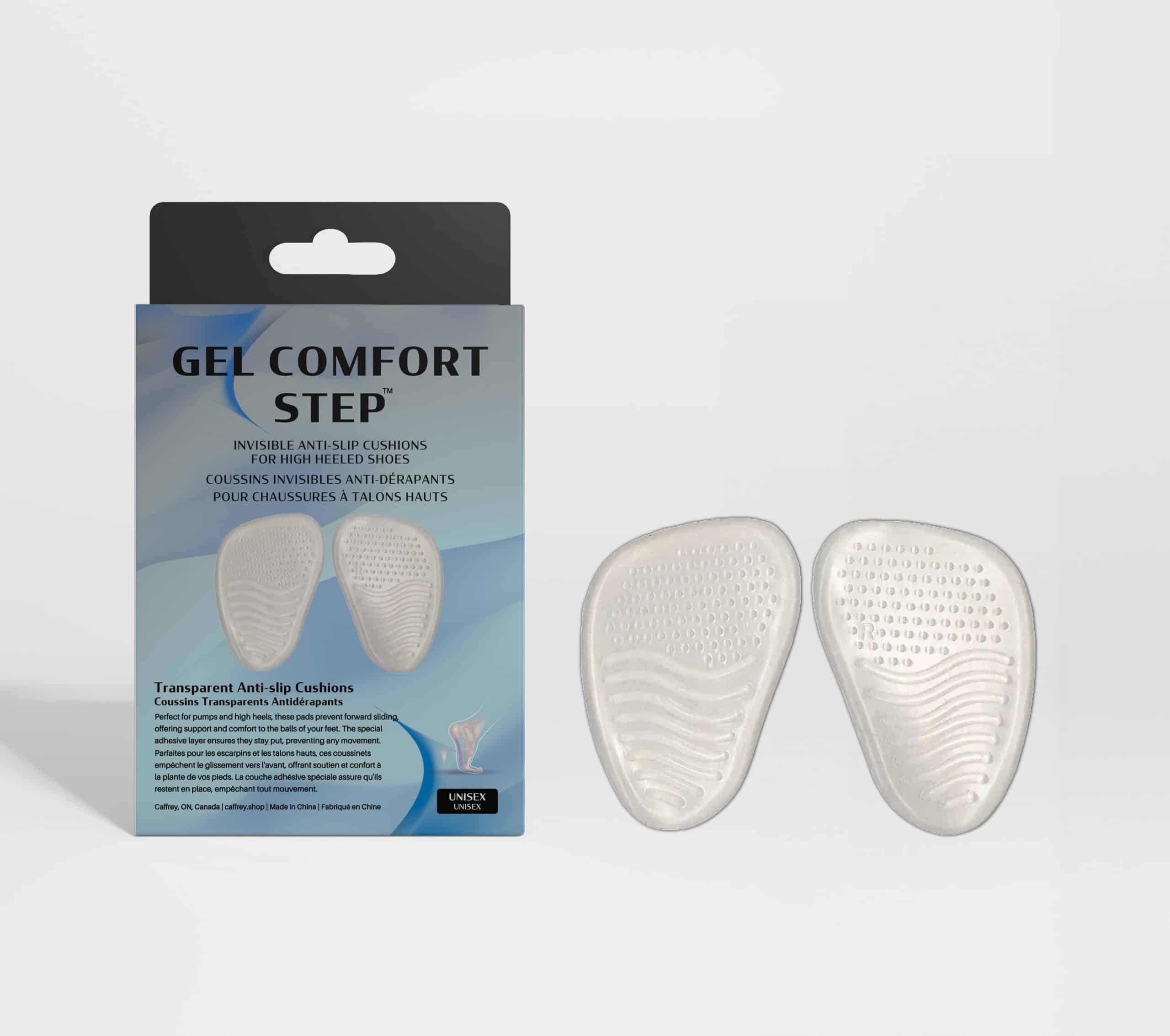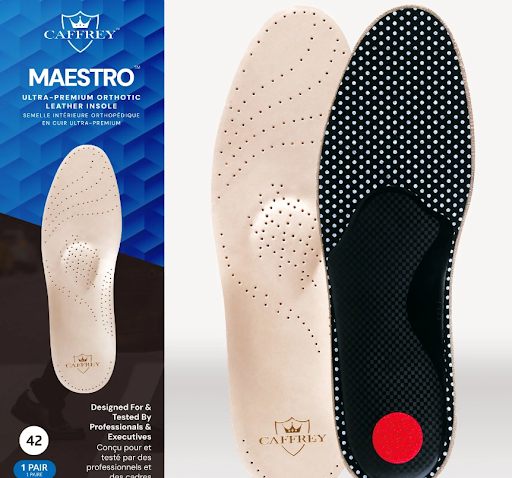
Defining Shoe Types by their Seams

Introduction
When it comes to shoes, the devil is in the details. One of those details that often goes unnoticed, but plays a pivotal role in defining a shoe's style, is the seam.
Seams might seem like a minor design element, yet they carry the narrative of a shoe's style and purpose. Defining Shoe Types by their Seams, therefore, becomes an essential skill for anyone interested in understanding footwear anatomy.
Think about it: Seams can transform a simple piece of leather into various footwear styles - from Oxfords to Brogues, from Wingtips to Wholecuts. Their placement, shape, and stitching technique all contribute to the overall aesthetic and structure of the shoe.
By understanding shoe seams, you'll gain a valuable perspective on how these small stitch lines contribute to the character and identity of your shoes. This knowledge will empower you to make informed decisions when choosing the right footwear for any occasion.
Remember, shoes are not just utilitarian products; they are expressions of personal style and taste. The more you know about their construction and design elements like seams, the better you can appreciate their craftsmanship and make choices that align with your style preferences.
Defining Your Shoes by their Seams
When you delve into the world of high-quality footwear, you'll notice the defining shoe styles often hinge on the role of seams in shoe styles. Among these styles, the Wholecut style stands out as a paragon of minimalist elegance.
Wholecut
- Sleek and Seamless Design: The Wholecut shoe is crafted from a single piece of leather, which means you'll find an almost complete absence of visible seams. This unblemished surface gives the shoe a sleek appearance that exudes luxury and sophistication.
- Constructional Necessity: Despite its clean lines, the Wholecut shoe typically includes a subtle back seam. This seam is essential for construction, allowing the leather to be shaped into the classic shoe form.
- Dog Tail – A Discrete Feature: Occasionally, a Wholecut may feature what's known as a "dog tail," a small leather extension at the top of the back seam. This detail is not just decorative; it's part of what holds the entire structure together.
The magic of Wholecut shoes lies in their simplicity and versatility. They can effortlessly transition from business settings to formal events, making them an ideal choice for those who appreciate understated style. Understanding these nuances allows you to make informed choices about your footwear wardrobe, ensuring that you select pieces that align with both your personal style and functional needs.
This knowledge of Wholecuts equips you to explore other shoe designs where seams play a more pronounced role in defining character and style.
Gooseneck
When it comes to shoe styles, knowing about seams is crucial. One seam that perfectly showcases this is the Gooseneck seam. It adds a unique touch to the shoes it's used on. Unlike the Wholecut style which has minimal seams except for the back seam or 'dog tail', the Gooseneck seam stands out with its clever overlap of the shoe's quarters over the vamp.
Characteristics of the Gooseneck Seam
The Gooseneck seam is easy to identify because of its graceful curve where the quarters (the back and sides of the upper part of the shoe) overlap the vamp (the front part of the shoe). This creates a seamless transition on both sides of the laces.
Commonly Found on Closed Laced Shoes
You'll often see this type of seam on closed laced shoes like Oxfords. Here, it serves not only as a design element but also plays a crucial role in forming what's called the facing—the section that houses the eyelets for lacing.
It's essential to grasp these characteristics as each seam brings its own visual and structural features to a shoe style, impacting both how it looks and how it functions. The Gooseneck seam adds a touch of elegance, underscoring why paying attention to details is important when choosing shoes that go well with your outfit for any occasion.
Swan Neck
The Swan Neck seam is a captivating feature that enriches the aesthetic of fine footwear. It stands as a decorative version of the Gooseneck seam, showcasing an amplified and ornamental design. Here's what you need to know about this distinctive element:
- Striking Appearance: The Swan Neck seam travels up the facing of the shoe, often incorporating elegant curves that catch the eye and add a sense of sophistication.
- Ornate Details: Unlike its more understated cousin, the Gooseneck seam, the Swan Neck boasts additional stitching and design work that makes it more prominent.
- Unique to Certain Styles: You will typically find this seam adorning dressier shoe styles, where its intricate look complements formal attire.
Understanding how each seam contributes to defining shoe styles is crucial, and recognizing the role of seams like the Swan Neck can guide you in selecting shoes that align with your fashion objectives. Whether you opt for a Wholecut style for its lack of seams and sleek profile or appreciate the back seam and possible dog tail addition for subtle detail, it's the discernment of elements like the Swan Neck that sets apart your knowledge of footwear aesthetics.
Balmoral: A Classic Seam for Dress Boots
When it comes to defining shoe styles, the role of seams is significant. The Balmoral seam, often seen in boot styles, is a prime example. This unique seam is typically found where the shaft of the boot is joined to the vamp with a vertical seam.
How the Balmoral Seam is Constructed
The Balmoral seam starts at the vamp and runs horizontally along the length of the quarters before wrapping around the back of the shoe. This method of construction creates a clean and streamlined look that aligns with the aesthetics of dress boots. The vertical alignment of this seam adds a distinct character to the shoes, enhancing their overall design appeal.
Where You Might Find Balmoral Seams
While it's less common in standard shoe styles, you might occasionally encounter a Balmoral seam in more formal or fashion-forward footwear designs. Recognizing this particular seam can help you identify high-quality footwear and make informed decisions about your shoe purchases.
The Importance of the Balmoral Seam
Although it's not as visually prominent as some other types of seams, like those found in Wholecut styles, it plays an equally crucial role in defining the overall shoe style and construction. Specifically, when you notice a Balmoral seam, you're likely looking at footwear with a sturdy and robust construction designed for durability and long-term wear.
By understanding these characteristics that each seam brings to a shoe style, including those that are less visible like the Balmoral seam, you'll be well-versed in identifying different shoe styles at first glance.
Adelaide
When it comes to understanding different shoe styles, seams play a crucial role. One particular stitching pattern that stands out is the Adelaide seam. It showcases how a unique seam design can define an entire shoe style.
Unlike Wholecut shoes that are known for their seamless appearance (except for the back seam and occasional dog tail), Adelaides feature a more decorative element.
Key Features of the Adelaide Seam
- Distinctive Feature: The Adelaide seam stands out with its "U"-shaped stitching. This special design highlights the front part of the shoe, usually seen on Oxford styles.
- Visual Appeal: The smooth curve created by the Adelaide seam adds an extra touch of sophistication and elegance to your footwear, setting them apart from simpler designs.
- Construction: Beyond its aesthetic appeal, this seam serves a practical purpose by securely attaching the facing and quarters to the vamp (upper part of the shoe). This ensures both durability and refinement in craftsmanship.
Understanding the Adelaide seam allows you to recognize and appreciate the small details that each stitch brings to a shoe's overall character. It's not just a functional component of shoemaking; it's also an artistic expression that showcases the meticulous workmanship behind stylish shoes.
Next time you spot that "U" shape on the front of your shoes, you'll have a deeper understanding of the intricate world of shoemaking and be able to make more informed decisions about your personal style.
Heel Counter
The heel counter seam is an important part of shoe styles. Unlike the seamless Wholecut style, other designs use the heel counter seam for both looks and support. This seam involves a piece of leather that wraps around the back of the shoe, offering several advantages:
- Visual Interest: The heel counter seam adds a unique feature to the back of the shoe, making it stand out from simpler designs. Different types of stitching or embossing can highlight this detail and make the shoe more visually appealing.
- Structural Support: Besides its decorative purpose, this seam is crucial for keeping the shape and support in the heel area. It reinforces the material against daily wear and tear, ensuring durability and comfort.
- Balance in Design: Positioned at the rear, the heel counter seam brings a sense of balance to the overall design. It complements elements like toe caps or brogue patterns by creating a cohesive look.
Understanding how each seam affects a shoe style can help you choose footwear that matches your preferences and needs. The heel counter seam is a great example of how functionality meets design in shoemaking.
Unlike noticeable parts of a shoe such as wingtips or cap toes, paying attention to subtler components like the heel counter can enhance your perception of quality and style in footwear.
Saddle Shoe
The Saddle Shoe is a distinct shoe style that stands out because of its unique design feature—the Saddle Shoe seam. This seam is easily recognizable as it involves placing a contrasting piece of leather across the instep and attaching it to the upper part of the shoe. Unlike the seamless Wholecut style, the Saddle Shoe seam adds a bold visual element through its color contrast and strategic placement.
Key Characteristics:
Here are the main features that define a Saddle Shoe:
- Contrasting Material: A second piece of leather, which is different in color from the main body of the shoe, crosses over the middle section.
- Attachment to Upper: This additional piece of leather is not just for show; it is securely stitched to the rest of the shoe, providing structural integrity.
The presence of seams plays a crucial role in distinguishing various shoe styles, with each seam bringing its own unique touch to the final product. In the case of Saddle Shoes, there are additional factors to consider:
- Variety in Stitching: The saddle area of these shoes can showcase different stitching styles, allowing for further customization. Some options include:
○ Plain saddle: A minimalist approach with simple stitching.
○ Decorative stitched pattern: More intricate designs that add complexity and ornamental value.
Understanding these key characteristics will help you develop an appreciation for the craftsmanship involved in creating each style. It will also guide you in making informed decisions when choosing footwear for specific occasions. Remember, the Saddle Shoe seam isn't just about aesthetics; it contributes to the overall structure and is an integral part of what gives this shoe type its identity.
Top Line Seam
When defining shoe styles, examining the role of seams is critical to understanding their aesthetics and construction. The Top Line seam might not strike you as a traditional seam since it doesn't connect two separate pieces of leather; however, its importance lies in the subtle details it brings to the overall style.
Description
The Top Line seam traces the edges of the shoe's facing where it meets the shoe opening. This seam can be found running along the rim of shoes, creating a border that delineates where the material ends and where the foot enters.
Functional Purpose
Despite its less conventional role, this seam is integral in anchoring the upper part of the shoe to the sole. It ensures that the edges maintain their shape and provides a finished look to the shoe.
In styles like the Wholecut, where minimalism is key due to a lack of seams—with only a back seam or perhaps a subtle dog tail present—the precision of the Top Line seam becomes even more apparent. It exemplifies how each seam contributes uniquely to a shoe's character.
Understanding these characteristics helps you appreciate how something as simple as a Top Line seam can influence both the form and function of your footwear.
Toe Seams
Different shoe styles feature various toe seams, each contributing to their distinct look. Understanding these seams can help you better understand your shoes and make informed choices.
Split Toe
Also known as an Algonquin or Norwegian stitch, the Split Toe seam divides the toe box into two sections. A raised seam runs along the middle, adding a touch of intricate detail to the shoe's front.
Apron Toe
The Apron Toe seam is characterized by a strip of leather that extends from the vamp, reminiscent of a decorative apron. This distinguishing feature outlines the upper perimeter of the vamp but typically does not extend to the end of the toe.
Moc Toe
With its stitching recessed into the vamp's surface, the Moc Toe seam creates a moccasin-like effect. This unique style adds a casual flair to your footwear.
Bicycle Toe
Resembling bicycle handlebars, the Bicycle Toe seam extends the quarters forward along the vamp's sides and towards the toe. This design element adds visual interest and a dash of whimsy to any shoe style.
Recognizing these different toe seams can help you appreciate the craftsmanship that goes into creating various shoe styles. From split and apron toes to moc and bicycle toes, each seam has its unique role in shaping a shoe's appearance.
Split Toe
When we talk about different shoe styles, one important aspect to consider is the role of seams. Seams are essential in shaping the identity of a shoe and giving each design its unique look. Two such styles that stand out are the Wholecut and the Split Toe.
Wholecut Style: Seamlessness at Its Best
The Wholecut style is known for its seamless construction. Unlike other shoes that have multiple seams, Wholecut shoes are made from a single piece of leather with minimal stitching. This gives them a sleek and polished appearance, free from any visible seams except for a small one at the back or sometimes a tiny extension called a "dog tail." The absence of prominent seams is what sets Wholecut shoes apart and gives them their refined look.
Split Toe: A Seam That Makes a Statement
On the other hand, the Split Toe seam is all about making a statement. Also referred to as the Algonquin or Norwegian seam, it is a distinctive feature in shoe design. Here's what you should know about the Split Toe:
- Split Toe Seam: The most noticeable characteristic of this design is its central raised seam that runs along the front of the shoe, dividing the toe box into two sections.
- Algonquin or Norwegian Stitch: These terms are used interchangeably to describe the same type of seam, highlighting its significance in various shoemaking traditions.
- Aesthetic Contribution: The raised seam of the Split Toe not only adds texture but also creates visual interest, making it a focal point of the shoe's appearance.
Appreciating Craftsmanship Through Seam Styles
By understanding these features, you can better appreciate the skill and artistry behind each shoe style. Seams are more than just functional elements; they play a crucial role in defining the overall look and character of footwear.
Whether it's the seamless elegance of Wholecut or the bold statement of Split Toe, every shoe style has its own story to tell through its seams.
Apron Toe
When you look closely at different shoe styles, you'll see how seams play a crucial role in shaping their identity. Unlike Wholecut shoes that have a clean and minimalistic look with very few seams, other designs like the Apron Toe stand out with their unique detailing. Understanding the characteristics of each seam can help you appreciate the subtle differences in shoe design.
The Apron Toe seam stands out with these features:
- A strip of leather that runs across the top of the vamp (the front part of the shoe upper)
- Resembling an apron worn for protection
- Often wrapping around the upper part of the vamp but not reaching all the way to the toe
This type of seam adds sophistication and dimension to a shoe's appearance. It creates an interesting layered effect and can be found in both formal and casual footwear styles. What's fascinating is that an Apron Toe can be created just by adding a seam without using any extra piece of leather, showing how strategic placement of seams can define a shoe's look.
The Apron Toe detail isn't just decorative; it's a defining feature that sets certain shoes apart from others. By understanding this element, you'll gain a deeper appreciation for the intricate world of shoes.
Moc Toe
When it comes to understanding shoe styles, it's important to know about the different seams used. One seam that has a big impact on the style of a shoe is the Moc Toe seam.
The Moc Toe seam is easily recognizable because it looks like a moccasin. This unique appearance is created by stitching that is done below the surface of the upper, instead of on top. The result is a subtle yet stylish indentation that adds character to your shoes.
Like other styles such as the Wholecut, which has a sleek look due to its lack of visible seams (except for a small one at the back), the Moc Toe also has its own distinctive look. This type of stitching gives your shoe a laid-back and casual vibe, making it perfect for informal occasions.
But don't be fooled by its casualness. Moc Toe shoes can be just as versatile as any other style. Depending on the material and color of the shoe, they can work well with a variety of outfits and occasions.
Understanding these subtle differences in shoe seams can take your fashion game to the next level. You'll not only be able to recognize various styles but also choose what works best for you in any situation.
Bicycle Toe
Defining shoe styles can be a complex process, but understanding the role of seams in shoe styles can provide clarity. One such fascinating seam is the Bicycle Toe seam. This distinctive style draws its name from its resemblance to the handlebars of a bicycle.
A Bicycle Toe seam is characterized by the quarters of the shoe extending forward along the sides of the vamp. This design creates a unique look that stands out in any footwear collection. The Bicycle Toe seam is often seen on both formal and casual shoes, offering versatility and style flexibility depending on your fashion needs.
This style differs from the Wholecut style, which is defined by its minimalistic design, with a distinct lack of seams except for a subtle back seam or "dog tail" for structural purposes. The Wholecut style presents a sleek and polished appearance, while the Bicycle Toe provides an interesting shape and a more dynamic look.
Understanding these nuances in shoe design can enhance your ability to identify different styles at a glance. Much like how every bicycle has handlebars, every shoe has its own unique set of characteristics brought about by its seams. Appreciating these details will not only enrich your knowledge of footwear but also assist in finding the perfect pair for any occasion.
In essence, learning about seams like the Bicycle Toe and others highlights the importance of understanding the characteristics that each seam brings to a shoe style. It's these small details that truly define a shoe's aesthetic and functionality.
Wingtips and Cap Toes
When it comes to shoe styles, seams play a crucial role in distinguishing between Wingtip and Cap Toe designs. These styles are often known for their unique broguing patterns:
- Wingtips
Identified by the W-shaped design on the toe, wingtips extend down the sides of the shoes. The intricate perforations and serrations along these seams can vary, creating a range of sub-styles from conservative to elaborate.
- Cap Toes
Simpler than wingtips, cap toes feature an additional piece of leather across the toe box with a horizontal seam that may or may not include broguing. The absence or presence of brogue detailing on this seam impacts the shoe's formality.
The Wholecut style, known for its lack of seams apart from a back seam and possibly a dog tail, contrasts sharply with these more detailed counterparts. Understanding how each seam and broguing pattern affects the aesthetic allows you to make informed choices:
- Pairing with Outfits: Wingtips, with their decorative perforations, suit smart-casual to semi-formal attire. In contrast, plain cap toes lean towards formal wear due to their cleaner lines.
- Role in Shoe Design: Beyond aesthetics, broguing can affect the flexibility and breathability of shoes, factors worth considering based on your needs.
Recognizing the nuances in these designs ensures you select footwear that aligns with your style preferences and occasion requirements. Moving beyond the toe of the shoe, other elements such as lacing systems and heel construction further influence a shoe's character and function.
Stitch Cap
When it comes to defining shoe styles, the role of seams can't be overstated. Each seam brings a distinct characteristic to a shoe style. Let's take a closer look at the Stitch Cap style.
Unlike other styles that feature intricate broguing, the Stitch Cap is characterized by its simplicity. The cap toe, a defining element of this style, is devoid of perforations. Instead, it boasts a visible stitch line along the edge. This aesthetically clean and straightforward design sets the Stitch Cap style apart.
The stitch line, which can either be a single row or double row, runs along the seam of the cap toe. This simple yet elegant detail enhances the overall appearance of the shoe without being overly ornate or complicated.
- Visible stitch line: The stitch line in the Stitch Cap style is one of its most distinguishing features. It adds an understated elegance to the shoe while maintaining its simplicity.
Choosing a shoe with a Stitch Cap style allows you to enjoy the beauty of craftsmanship in its simplest form - through clean lines and minimalistic design. So next time you're looking for shoes that are subtle yet stylish, remember to consider the Stitch Cap style.
In understanding these characteristics that each seam brings to a shoe style, you're not just becoming more informed; you're enhancing your ability to make better choices when it comes to footwear.
Quarter Brogue
When you look at a Quarter Brogue, the first thing you'll notice is the unique broguing along the toe cap seam. This isn't just for show; it's a defining feature that determines the style of the shoe and affects how formal it looks. The Quarter Brogue is more understated compared to its flashier counterparts.
- Toe Cap: You'll see decorative holes along the edge of the toe cap.
- Quarters and Facing: There will be additional broguing along the seams in these areas.
- Visual Balance: These decorative holes create a sense of harmony in the shoe's design.
The importance of seams in shoe styles like the Wholecut becomes clearer when you compare them to a Quarter Brogue. While a Wholecut has minimal seams, except for the back seam and maybe a small one near the heel, the Quarter Brogue embraces seams as a way to add intricate details.
Understanding how each seam contributes to a shoe style helps you appreciate the skill involved in making shoes. In the case of the Quarter Brogue, every bit of broguing on the seams adds depth and texture without overpowering the overall design. It's all about finding the right balance, where each tiny hole enhances the shoe's sophisticated look.
This careful attention to detail ensures that while Quarter Brogues aren't as simple as Wholecuts or Stitch Caps, they can still be worn with many different outfits. Just remember that not every seam has broguing; it's this restraint that makes Quarter Brogues so well-balanced and elegant.
From this subtle sophistication, let's now explore another important aspect of shoe design—the impact of different toe seams on both looks and comfort.
Semi-Brogue (Half-Brogue)
The Semi-Brogue, also known as the Half-Brogue, is another style that you can define by its seams. It is similar to the Quarter Brogue, featuring broguing along the edge of the toe cap with possible additional perforations on other seams like quarters and facing.
However, what sets the Semi-Brogue apart from its Quarter counterpart is a distinctive design element: a decorative medallion that is usually punched or stamped into the center of the cap toe area. This medallion - an intricate pattern of holes - adds a layer of sophistication and detail to the shoe, making it more visually appealing.
Here are some key points about Semi-Brogues:
- The medallion is a central feature distinguishing this style from others.
- The decoratively punched holes create an intricate pattern in the center of the cap toe area.
- Semi-Brogues still exhibit broguing along the edge of the toe cap, similar to Quarter Brogues.
- They may also feature additional perforations on other seams such as quarters and facing.
Seams play a pivotal role in defining shoe styles like the Semi-Brogue, contributing to their unique characteristics and aesthetic appeal. Understanding these features helps in making an informed decision when choosing a shoe style for different occasions. And remember, while other styles might lack noticeable seams - like Wholecut shoes with only a subtle back seam or "dog tail" - each seam or absence thereof brings something unique to a shoe's style.
Full Brogue (Brogue)
The Full Brogue, also known as the Brogue, is a distinctive shoe style with its standout wingtip design. Unlike the Wholecut style that has minimal seams except for the back seam and a possible dog tail, the Full Brogue takes pride in its intricate features:
- Wingtip Design: This shoe has a W-shaped overlay on the toe that extends along both sides, resembling wings.
- Elaborate Perforations: Extensive broguing can be found not only on the wingtip but also on other parts of the shoe such as seams, the heel (heel counter), and sometimes even with a medallion pattern on the toe.
- Broguing Detail: This includes small holes and sawtoothed edges known as pinking, which originally served a functional purpose of draining water from shoes worn in wet Irish landscapes but are now purely decorative.
Understanding how each seam and detail contributes to a shoe style is crucial. In Full Brogues, the broguing adds complexity and character to the footwear, making it an ideal choice for those who appreciate intricate designs and timeless aesthetics. It is widely recognized as one of the most traditional forms of brogued shoes, suitable for both semi-formal and formal occasions.
Versatility in Wear
While Full Brogues are typically seen as less formal due to their more detailed appearance, they can still be worn in various settings:
- Business casual attire
- Semi-formal events
- Weddings (depending on the dress code)
- Social gatherings
By understanding these design and construction details, you will be able to make better choices when selecting footwear that complements your personal style and suits different occasions.
Longwing
A distinct variation of the classic Full Brogue, the Longwing style is distinguished by its wingtip design that extends all the way to the back of the shoe. This creates a continuous line along the sides, giving it a unique look that sets it apart from other brogued footwear. This seam running along the side of the shoe is what defines its longwing characteristic.
The Longwing style, like all shoe styles, is mainly defined by its seams. The extended wingtips are not just for show; they also play a functional role. The continuous seam provides added structural support to the shoe, making Longwings a durable choice for everyday wear.
In terms of appearance, Longwings offer an interesting mix of casual and formal elements. The full brogue detailing gives them an elegant touch, while the extended wings make them slightly more laid-back compared to their Full Brogue counterparts. This makes them a versatile addition to your footwear collection.
Defining Characteristics of Longwing Style
- Extended Wingtips: Unlike other brogues where the wingtip ends at the midpoint of the shoe, in Longwings it extends all the way to the back.
- Continuous Side Line: A distinguishing feature is the continuous line along the sides created by the extended wingtip seam.
- Versatile Appeal: Perfect balance between formal and casual with intricate brogue detailing and relaxed wingtip design.
Recognizing these characteristics will help you identify Longwing style shoes at a glance and can guide your decision when selecting footwear for specific occasions.
Austerity Brogue: A Style Defined by Simplicity
In the world of shoe styles, each has a unique characteristic that sets it apart. The Austerity Brogue is no exception to this rule. It's a style that stands out with its simplicity and elegance, achieved by forgoing traditional broguing.
The Minimalistic Appeal
The Austerity Brogue catches your eye with its minimalistic design. Unlike other brogues that feature decorative perforations (known as broguing), it presents a clean, unadorned appearance. The main distinguishing feature of this style is the presence of a decorative stitch line, which typically runs along the wingtip seam.
This stitch line is more than just an aesthetic element. It plays an integral role in the shoe's structure by securing the different parts of the shoe together. This seam not only adds visual appeal but also contributes to the shoe's overall strength and durability.
Versatility in Style
It is important to note that while the Austerity Brogue may lack the intricate detailing common in other brogue styles, it does not compromise on sophistication or versatility. Its streamlined look lends itself well to both formal and semi-formal attire.
Understanding the characteristics that each seam brings to a shoe style is crucial when choosing footwear for different occasions or outfits. By recognizing these subtle differences, you can confidently identify an Austerity Brogue and appreciate its understated charm.
Up Next: The Blind Brogue Design
Blind Brogue
In the vast spectrum of shoe styles, there's a unique style known as the Blind Brogue. This style deviates from traditional construction by replacing actual seams with broguing lines.
The Blind Brogue is characterized by an absence of actual stitched seams. Instead, a line of broguing directly impressed into the upper leather gives the impression of a seam. This subtle but distinctive feature creates the illusion of stitching without actual stitches being present. The resulting effect is both eye-catching and somewhat elusive, as it provides a hint of structure without the rigidity of sewn seams.
This style can be especially appealing for those who appreciate the aesthetic charm of broguing but prefer a cleaner, less cluttered look. The sleek broguing lines contribute to a refined appearance, adding depth and visual interest while maintaining a smooth and uninterrupted silhouette.
Taking time to understand the characteristics that each seam - or in this case, the absence thereof - brings to a shoe style is crucial in defining shoe styles. Just like its counterparts, the Blind Brogue tells its own story through its design elements.
As you delve deeper into the realm of shoe styles, you'll find that it's these subtle details like the use of broguing lines in place of actual seams that truly set each style apart. So next time you're examining a pair of shoes, try identifying if they're Blind Brogues – it’s all about spotting those intricate broguing lines!
Conclusion
Understanding shoe seams is crucial in the world of footwear. It allows you to easily identify different shoe styles and appreciate their intricate designs. Instead of just seeing shoes as accessories, you'll start to view them as carefully crafted pieces where every stitch matters.
Here are some key takeaways from understanding shoe seams:
- It changes your perception and value of shoes, from everyday sneakers to formal dress shoes.
- Small details like seams can reveal a lot about the quality and craftsmanship of a pair.
- Being mindful of these aspects can empower you to make better choices when buying shoes, whether it's investing in timeless Oxfords or opting for a unique style like Blind Brogues.
So the next time you're shopping for shoes, either in-store or online, pause for a moment to examine how they're made. Observe how different seams can completely transform the look of a shoe. Use this knowledge to guide your fashion decisions and curate a collection that reflects both sophistication and excellence.
FREQUENTLY ASKED QUESTIONS
Understanding shoe seams is crucial as they play a significant role in defining different styles of shoes. By learning about shoe seams, you'll be able to easily identify and choose the right type of shoes for any occasion.
The Wholecut style is characterized by the absence of visible seams, contributing to its sleek appearance. Sometimes, a subtle back seam or 'dog tail' is present in Wholecut shoes for constructional purposes.
The Gooseneck seam involves the quarters of the shoe overlapping the vamp in a graceful curve. It is commonly used in creating the facing of closed laced shoes like Oxfords.
The Swan Neck seam features a more exaggerated and ornamental interpretation of the Gooseneck stitch, creating a distinctive look for shoes.
The Balmoral seam is typically found in boot styles where the shaft is joined to the vamp with a vertical seam, adding to the overall aesthetic and construction of the boots.
The Adelaide seam is characterized by a distinctive 'U'-shaped stitching that outlines the front part of the shoe, giving it a unique and recognizable appearance.


